TOPIC 2: OUR JOURNEY TO NOW!
OUTCOME 6: THE STRUCTURE OF DNA
DNA stands for deoxyribonucleic acid. It exists in nearly all living organisms and carries genetic information.
It is made up of “building blocks” called nucleotides. A nucleotide is made up of three parts: a sugar molecule (deoxyribose), a phosphate group, and a nitrogenous base. The 4 bases are adenine (A), guanine (G), thymine (T), and cytosine (C).
The “backbone” of the DNA is made of complimentary strands of the sugar and phosphate held together by the nitrogenous bases, which form pairs that run along this backbone, forming a double helix. A double helix looks like a twisted ladder.
In regards to the base pairs, they can go in any order however adenine always pairs with thymine (A and T), and guanine always pairs with cytosine (G and C). A good way to remember this is that the pointy letters go together, and the letters with the curved backs go together (thanks ms power imy)
DNA coils tightly to form a chromosome. Humans have 46 chromosomes in every cell (23 pairs). Chromosomes are found in the nucleus of a cell.
Watson and Crick created the Watson-Crick model of DNA, which showed that it is made of repeating sets of nucleotides.
However, the creation of this model was only possible through Rosalind Franklin’s “Photo 51”, which, through x-ray crystallography, depicted the double helix structure. She did not receive credit for her findings.
Genes are found in the double helix. Chunks/segments of the DNA each “code” for a physical trait, such as your hair texture, your eye colour, your height, et cetera. Multiple genes can be found on a single chromosome.
Different versions of genes are called alleles. Changes in the DNA sequence produce a new version of the gene, and as a result changes the characteristics the gene codes for (e.g. eye colour gene - green eyes allele, brown eyes allele, hazel eyes allele, blue eyes allele, grey eyes allele, etc.).
Genes are found in nucleotides, nucleotides make up DNA, which coils together tightly to form a chromosome, chromosomes are found in the nucleus of cells.
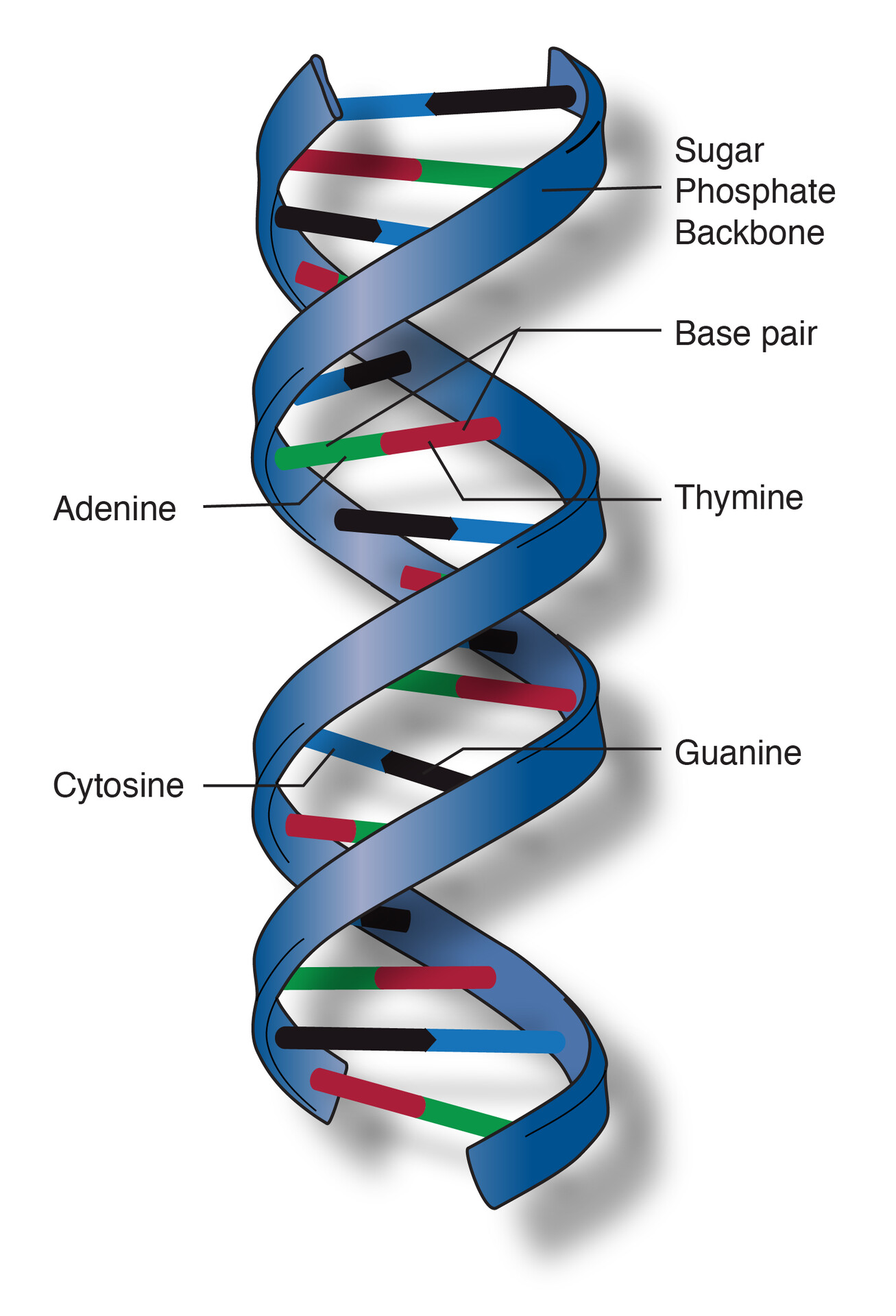

OUTCOME 7: REPLICATION AND CELL DIVISION
MITOSIS is the division of the nucleus during the process of cell division in which the parent cell splits into two daughter cells that each contain an exact copy of the genetic information in the initial parent cell. It occurs in somatic cells (all cells in the body excluding sperm and egg cells).
Mitosis is important as new cells are necessary for things such as the growth and repair of body tissue as well as the replacement of dead cells.
The steps of mitosis are as follows: Prophase, metaphase, anaphase, telophase, and cytokinesis.
INTERPHASE: DNA replicates.
PROPHASE: the chromosomes in the nucleus of the parent cell coil up, the nuclear envelope disappears, and the spindle fibers form.
METAPHASE: the chromosomes line up in the middle of the cell, and the spindle fibers connect to the chromosomes.
ANAPHASE: the chromosomes divide and the spindle fibers pull the chromosomes to opposite poles.
TELOPHASE: the chromosomes uncoil, nuclear envelopes form, 2 new nuclei are formed, and the spindle fibers disappear.
CYTOKINESIS: cytoplasm divides and splits the whole cell into two, resulting in the daughter cells.
MEIOSIS is the process in which a single cell divides twice to produce four new cells which each contain half of the original amount of genetic information, known as gametes. Gametes are reproductive cells, and are different depending on sex — females have ova (eggs), males have sperm. In humans, this occurs in either the ovaries (F) or testes (M).
The steps are divided into two phases; phase one and phase two. The steps in phase one are as follows: interphase, prophase 1, metaphase 1, anaphase 1, and telophase 1. The steps in phase two are as follows: prophase 2, metaphase 2, anaphase 2, and telophase 2.
PROPHASE 1: The longest and most complex phase. The chromosomes condense, and the homologous chromosomes (with sister chromatids that have 1 from the mum and 1 from the dad), come together to form a tetrad. They carry genes that control the same inherited trait. They cross over, which is when segments of non sister chromatids break off and reattach to the other to increase variation.
METAPHASE 1: The shortest phase. The tetrads align in the middle of the cell. Their orientation is random, which is known as independent assortment.
ANAPHASE 1: Homologous chromosomes separate and move towards the poles. The sister chromatids remain attached.
TELOPHASE 1: Each pole now has a set of haploid (unpaired) chromosomes and cytokinesis occurs, splitting into 2 haploid daughter cells.
PROPHASE 2: As in mitosis, the chromosomes coil up, the nuclear envelop disappears, and spindle fibers form
METAPHASE 2: The chromosomes line up in the middle of the cell, and the spindle fibers connect to the chromosomes.
ANAPHASE 2: Sister chromatids separate and move to opposite poles.
TELOPHASE 2: Nuclear envelope forms, cytokinesis occurs and four haploid daughter cells are produced.
Advantages of meiosis in genetic diversity of a species is that offspring will possess a combination of genetic traits inherited from the parents, which is good for natural selection as diversity makes it more likely for a species to survive.
Mitosis occurs in eukaryotic cells, which is cells that possess a nucleus and organelles. Prokaryotic cells (cells without a nucleus or organelles)
OUTCOME 8: MUTATION
When DNA replicates itself, there are sometimes errors that are not detected and fixed. This is called a mutation, and can happen due to mutagens or just pure chance. Mutagens are something that is capable of causing a mutation. These can be chemical or physical, including tobacco products, radioactive substances, x-rays, and ultraviolet radiation.
There are three types of possible genetic mutations: substitution, insertion, and deletion.

Not all mutations are harmful! Some species actually depend on mutations to survive. An example of this is if an insect has slight variations or mutations in its genetic code, it may be resistant to pesticides, keeping it alive while the other insects who do not have this resistance die out (natural selection).
Natural selection, genetic drift, and gene flow can cause changes in allele frequencies over time.
The Watson-Crick model hypothesises that mutations could occur due to a base very occasionally occuring in one of the less likely tautomeric form.
OUTCOME 9: THE FATHER OF GENETICS
GENES VS. ALLELES
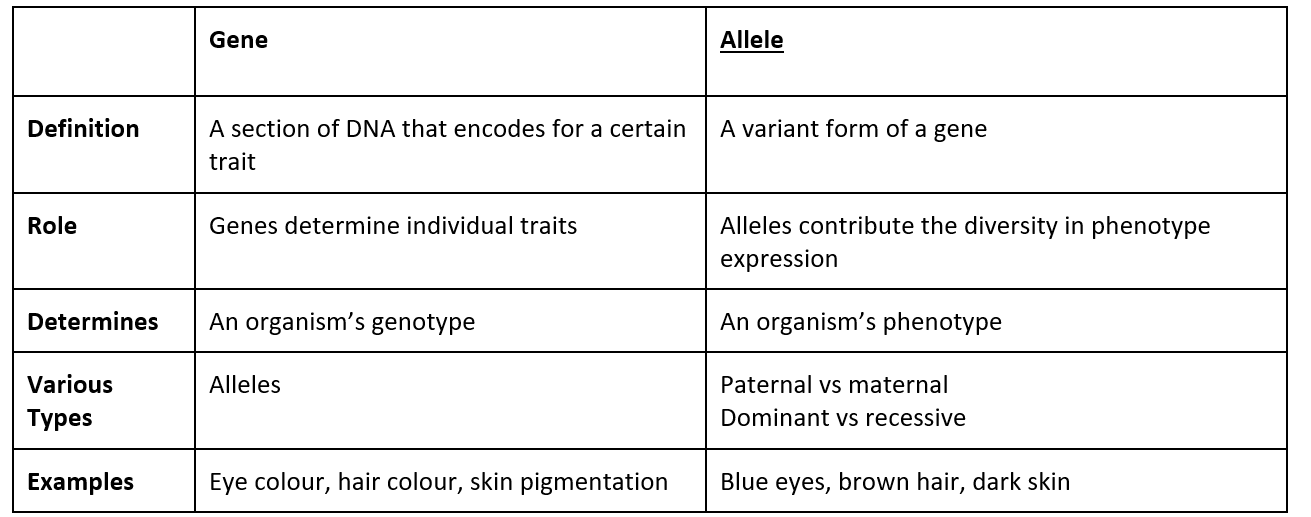 GENOTYPE VS. PHENOTYPE + DOMINANT VS. RECESSIVE
GENOTYPE VS. PHENOTYPE + DOMINANT VS. RECESSIVE
An individual’s genotype is their sequence of DNA which is unique to them. Their phenotype is the physical characteristics they possess as a result of their genotype.
There are two different types of alleles: dominant and recessive. Someone’s phenotype is determined by their dominant allele, as it has power over the recessive allele. A dominant allele is shown by a capital letter, while a recessive allele is shown by a lowercase letter.
For example, if someone possessed the allele for brown eyes, their eyes would be brown even if they also possessed the allele for blue eyes. This is because the browned eye allele is dominant, and the blue eye allele is recessive. In order for somebody to have blue eyes they must have two of these recessive blue eyed alleles. This can be seen in the Punnett square below:
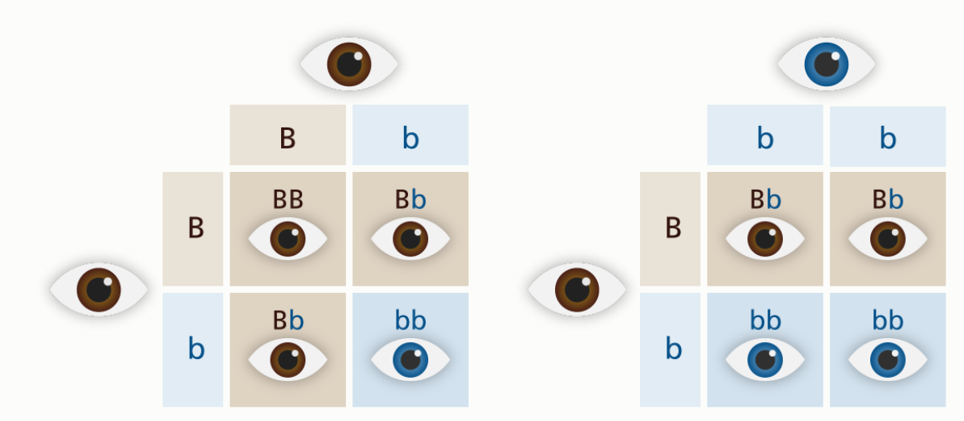
HOMOZYGOUS VS. HETEROZYGOUS
A diploid organism (an organism with paired sets of chromosomes e.g., humans) can either inherit two copies of the same allele or two different alleles from their parents.
Homozygous genotypes, homo meaning “same”, means you have inherited two of the same allele. In reference to the above Punnett square, a homozygous genotype would be either BB (homozygous dominant) or bb (homozygous recessive), since the letters are the same.
Heterozygous genotypes, hetero meaning “different”, means you have inherited two of the different allele, in reference to the above Punnett square, a heterozygous genotype would be Bb, since the letters are different.
GREGOR MENDEL
Mendel carried out experiments on peas to determine how individual traits are inherited.
Since peas grow quickly, many generations can be grown in a relatively short time period. Mendel used a large number of pea plants to complete his experiments, and found that each parent passed on half of its factors to each offspring and that certain traits were dominant over others.
OUTCOME 10: INHERITANCE
Heredity, also known as inheritance, is the passing on of traits from parents of offspring.
OUTCOME 11: PEDIGREE
A pedigree is a type of diagram that is used to represent the individuals in a family and track the inheritance of a particular trait in a family.
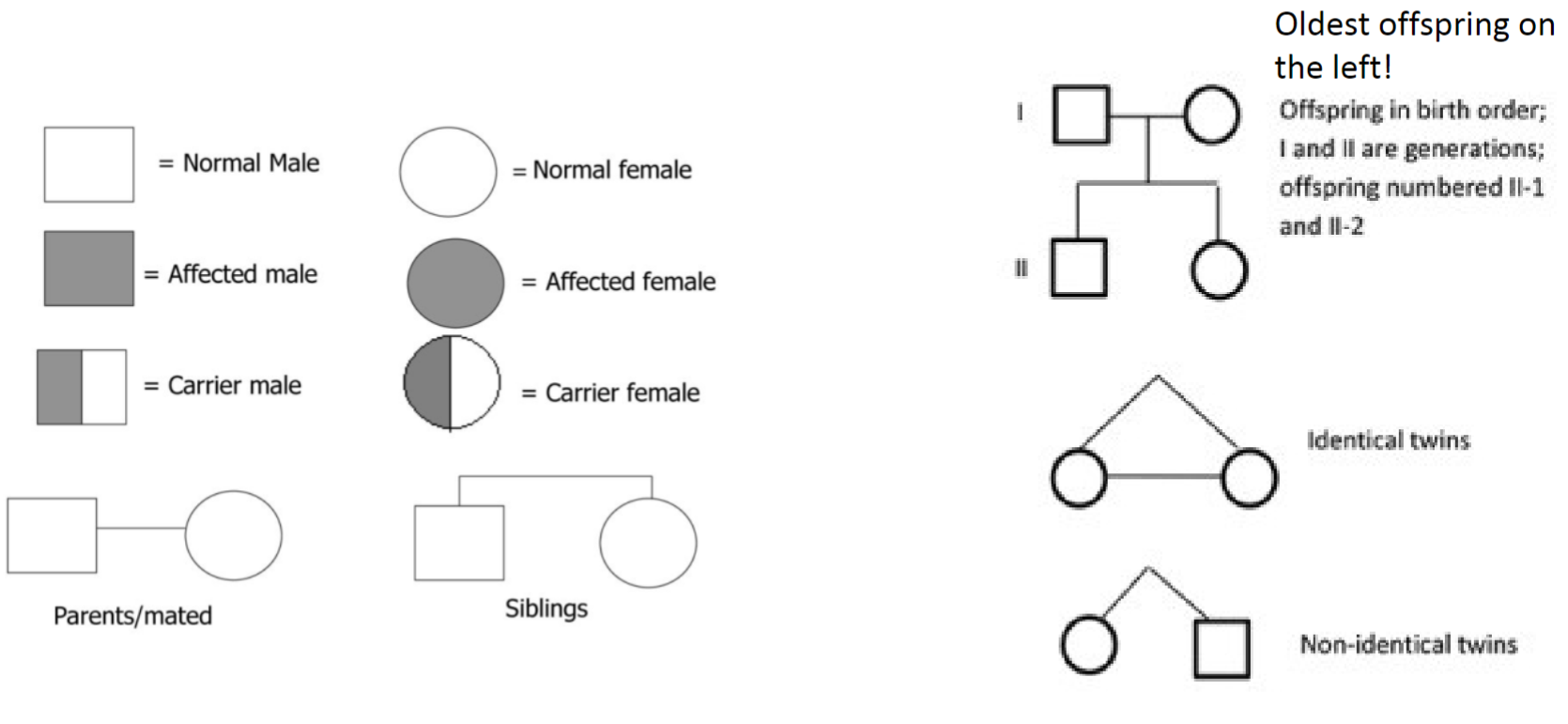
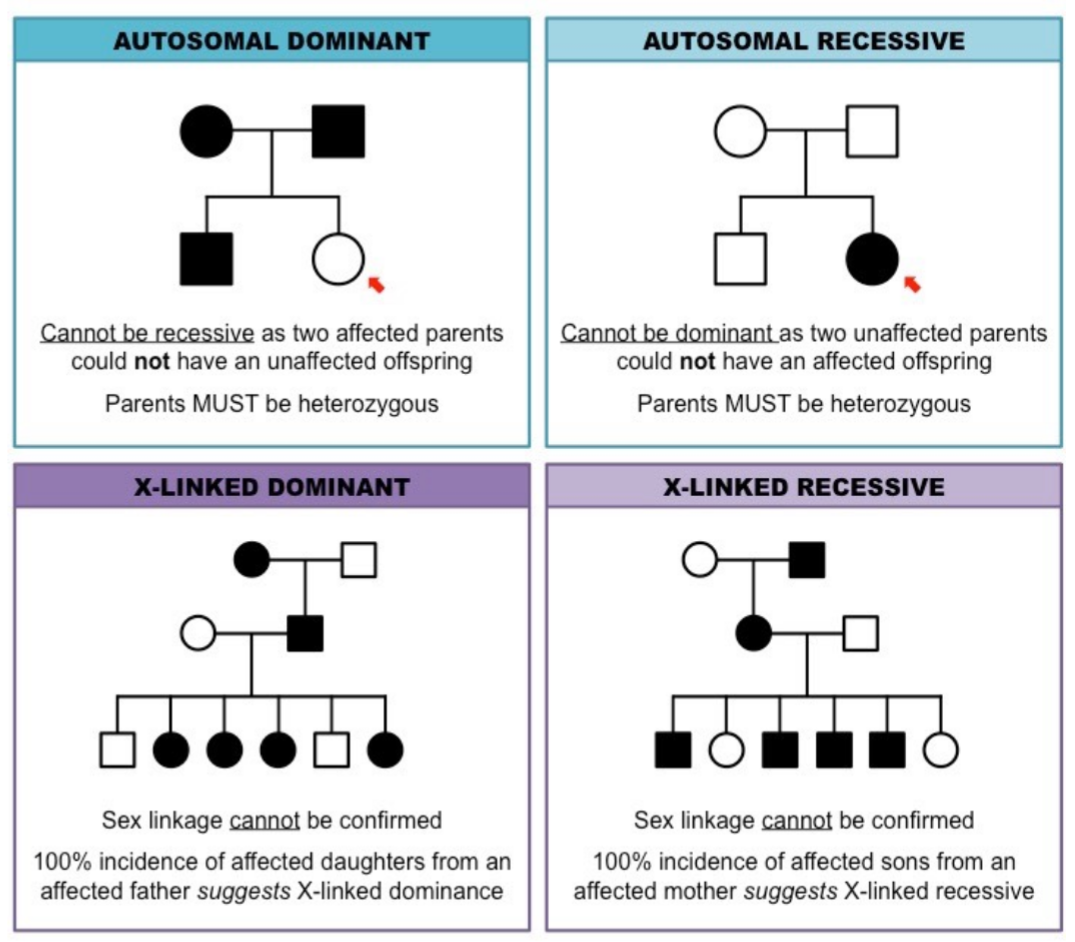
OUTCOME 12: GENETICS IN MEDICINE
Cloning is when a genetically identical organism is produced. This can be done naturally (e.g., identical twins), or artificially (e.g., sheep cloning).
ABOUT SHEEP CLONING
The DNA from one sheep is inserted into an egg of another sheep that had the nucleus removed.
This fused cell is implanted into the uterus of a surrogate mother.
The embryo develops into a clone of the sheep that donated its DNA.
ADVANTAGES AND DISADVANTAGES + ETHICS
ADVANTAGES: able to produce identical organisms and bring extinct species back to life. Can bring back identical clones of relatives or pets (is this an advantage? kind of giving ethical dilemma rn)
DISADVANTAGES: bringing back extinct animals interferes with food chains and ecosystems.
A lot of ethical problems associated with cloning. Distortion in family dynamics, objections from different cultures and religions (ability to artificially create life effectively usurping many gods’ statuses as creators), cloning technology prone to abuse (clones raised as slaves or clones created for harvesting organs etc. etc.). Cloning of animals used for meat and other foods is also often questioned regarding its safety.